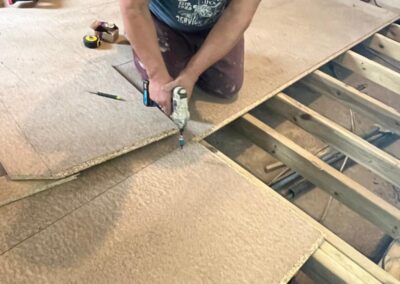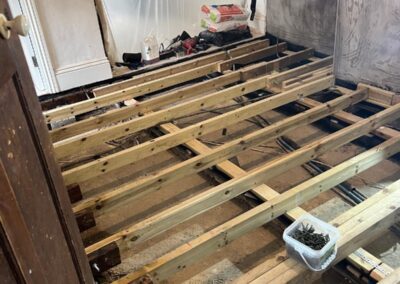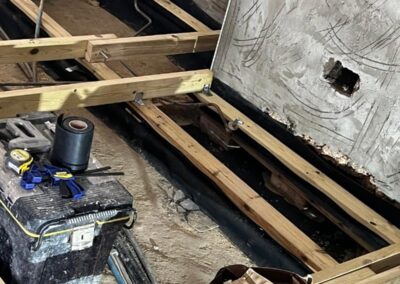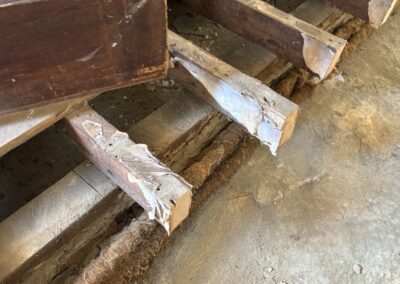Dry Rot Remediation
Following our detailed report and recommendations, we were awarded the contract to carry out the remedial works. This case study documents the project from initial survey through to completion, highlighting the diagnostic process, treatment strategy, and restoration phases.
Our inspection revealed extensive dry rot affecting skirting boards, floorboards, and joists in the front room. Moisture readings were high, with up to 100% WME recorded in masonry near the fireplace. Blocked air bricks and poor ventilation had created humid conditions, leading to visible mycelium growth, advanced timber decay, and a notable structural risk.



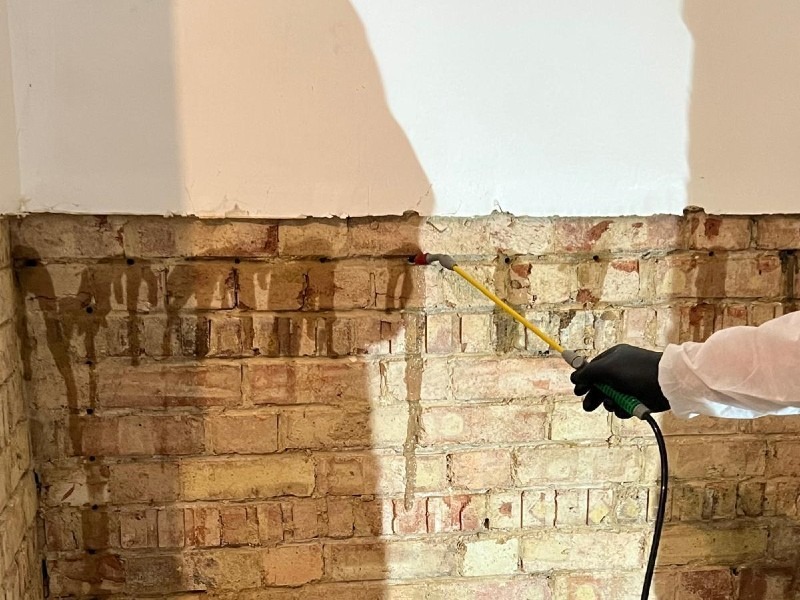
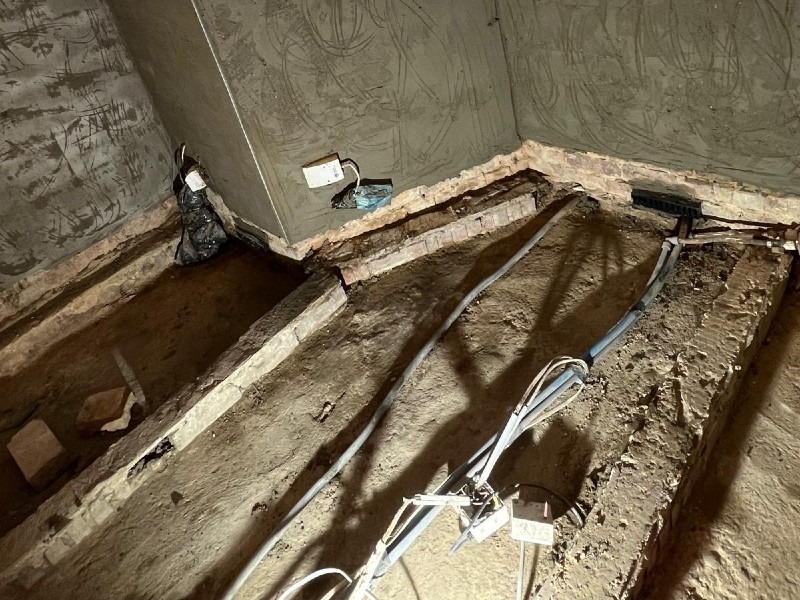
During the second week, new pre-treated timbers were installed to replace the decayed structural elements, ensuring long-term protection against future outbreaks. Air bricks were also fitted to improve subfloor ventilation, addressing one of the root causes of the problem. The reinstatement phase followed, including re-plastering and the restoration of finishes, leaving the treated area dry, stable, and ready for decoration. The works were completed within the planned two-week timeframe, restoring the integrity and safety of the affected section of the property.



